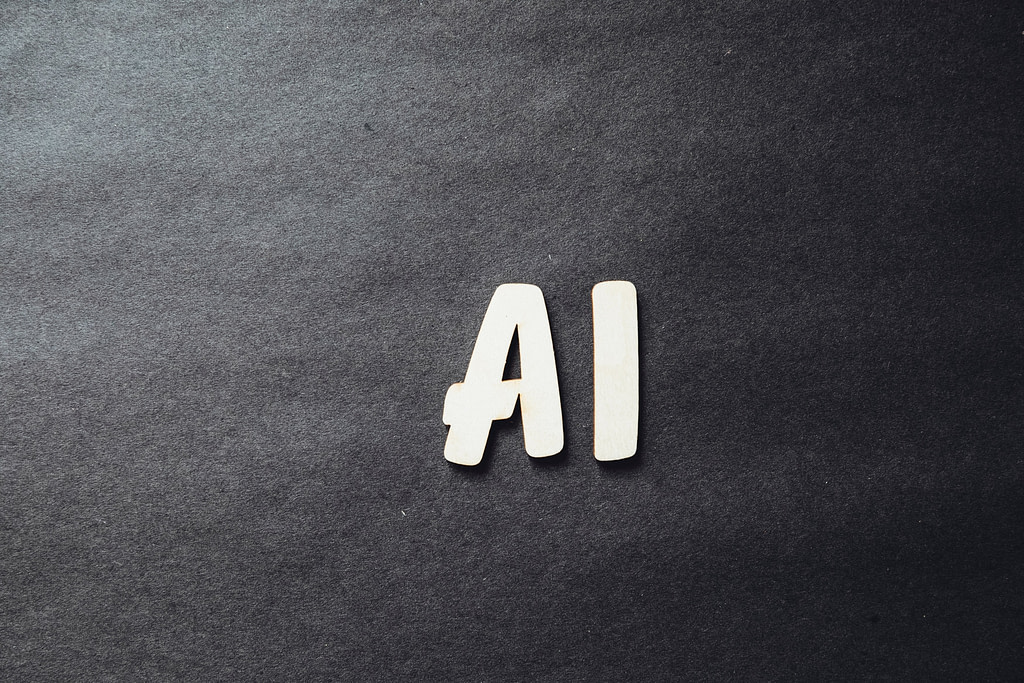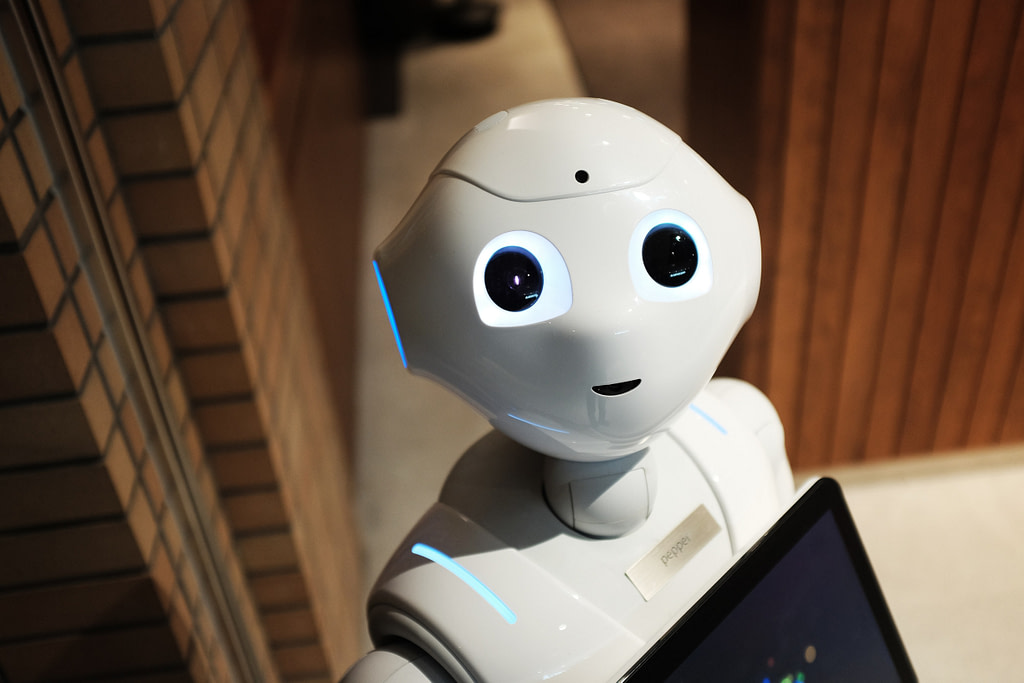The robotization of business processes is moving more and more boldly in the direction of intelligent automation and is joining forces with various areas of Artificial Intelligence. This makes it possible to automate not only rule-based processes but also those more advanced, which require comprehension of data stored in different formats or their precise analysis. What is the difference between Artificial Intelligence and Robotic Process Automation (RPA)? What are the benefits of combining these two technologies?
What does RPA mean?
RPA (Robotic Process Automation) automates business processes – it allows for defining an instruction set for a robot to perform. Simply put, robots reproduce the steps performed by humans, and eliminating human error is their purpose. Bots work perfectly in many areas and effectively support more or less complex processes. Moreover, they can perform the ordered work incomparably faster than humans and don’t need downtime or vacation, meaning they can work 24/7. In many large companies, the use of bots is already a standard.
Should we be afraid that bots will replace people? Not necessarily. Automating repetitive tasks relieves employees – this is primarily about freeing them from the most tedious tasks and allowing them to focus on those that require creativity, knowledge, and experience or simply generate more revenue for the company.
When considering creating a bot and using it in your own organization, you should be aware that it is impossible to use automation anywhere. Like any other tool, RPA also comes with some limitations:
- With bots, you can automate continuous, repeatable, and well-defined processes based on straightforward business rules – the bot must know the scenario for every situation it may encounter. Many processes meet these conditions, but some don’t – they should be rejected at the initial qualification stage. We will cover the best usage practices later in the article.
- Creating a bot requires time and a certain budget. These costs are justified only if they are balanced by sufficiently large benefits – meaning, usually, substantial savings (e.g., reduction of FTE), but also error elimination or significant risk reduction. In the case of financial institutions, it is not uncommon for errors or delays to result in huge penalties – RPA can effectively protect the company against such an eventuality.
- RPA is not compatible with every program or application. And surprisingly, despite appearances, it is not the case that only outdated software excludes the possibility of automating the process. Often, even new applications are written in a way that the robot cannot interact with them, which disqualifies the entire process.

Is RPA artificial intelligence?
RPA is often put in the same line with AI (Artificial Intelligence), but it should be emphasized that these are two entirely different technologies. AI more or less successfully simulates human intelligence, while RPA only imitates human steps. And these are steps that someone carefully analyzed beforehand and dressed them up in business rules.
For example, Robotic Process Automation solutions could only handle structured data (or at least semi-structured). AI, in turn, as it is a simulation of human intelligence, can understand and properly analyze even unstructured data, such as speech or natural language.
To sum up:
- AI “thinks” and tries to improve ongoing processes based on data,
- RPA focuses on getting specific, standardized work done; it doesn’t draw any conclusions regarding improvements, data, or steps of the process (while AI is able to do so).
Is it possible to combine those technologies and improve productivity when automating more advanced business processes? Absolutely!
Read also: How Will Artificial Intelligence Change the Future
How do RPA technology and AI work together?
Bringing together the capabilities of RPA and Artificial Intelligence is a natural development direction in business process automation. And this is not a new direction at all, as it is already being dynamically developed in many organizations.
The purpose of AI Automation, as the combination of RPA and AI is called, is to generate even greater business benefits for the organization. Intelligent automation effectively addresses the shortcomings of RPA and AI working separately. In simple words: this takes automation to a whole new level.
Let’s explain this with an example. Suppose a business process at any stage foresees the need to read information from an invoice or other document that is only available in the form of an image. In that case, RPA may not be able to handle the task. Image recognition is not the most exemplary RPA skill – the invoice would have to look the same every time, and have the same structure. For a properly trained AI model, this would not be a problem, as AI can analyze and respond to any changes in the image structure
There is also another side to this. The fuel for artificial intelligence is data, and as you know, this data is not effortlessly accessible, especially in large organizations. Often, you need to log into a particular system and generate a report with certain parameters. RPA can perform all the manual steps without difficulty, then pass the data to the AI model, and the effect of its work will be passed on to the end-user or will power another system.
What are the benefits of using AI Automation for business organizations?
- Time – unfortunately, humans cannot compete with bots or artificial intelligence regarding speed. There is no chance whatsoever of performing the necessary steps faster.
- Money – insofar as the processes to be automated are appropriately selected, the organization can count on measurable savings.
- Quality – bots don’t get tired or distracted, so automation also brings a higher quality of tasks performed. This is especially important for organizations where mistakes can have serious consequences.
- Better end-user experience – if used to complete tasks required directly by end-users, the results can get better every time, as bots can learn user preferences.
- Better use of resources – freeing employees from manual and tedious work is a chance to use their potential in more creative tasks that technology cannot yet handle. It is also an opportunity to reduce the high attrition rate.

How does Robotic Process Automation differ from Intelligent Automation?
Intelligent Automation (IA) is a concept that enhances the capabilities offered by RPA with technologies such as:
- Artificial Intelligence (AI) – a technology that simulates human intelligence and incorporates it into a process – i.e. machine learning.
- Optical Character Recognition (OCR) – a technology that allows you to efficiently read data from printed documents, scans, and photos.
- Intelligent Character Recognition (ICR) – a more advanced version of OCR that can read/translate handwritten documents.
- Natural Language Processing (NLP) – a technology that focuses on understanding, translating, and processing natural language by computers. Natural language generation or speech recognition is possible.
- Image recognition – allows for reading data from documents in formats like JPG, for example, or scanned documents.
How can you use Intelligent Automation in the business environment?
To begin planning for business process automation in an organization and to think about investing in any RPA tools, you should start with a thorough analysis. From the perspective of the organization’s managers, automation is an investment that must generate a sufficiently high rate of return. It is, therefore, reasonable to identify an adequately large number of processes that can and should be automated.
We will briefly describe the most popular IA use cases. AI development services often focus on those first because the potential savings in their case is the highest.
What business areas can benefit from IA implementation?
- Document processing – invoices, statements, emails, or even scans of documents from which some details need to be extracted for further use is a nightmare for most organizations. Those manual tasks, demanding and prone to errors, should be relatively easy to automate and, at the same time, bring significant benefits to the company.
- Reporting – as a rule, reporting is a repetitive process, but collecting necessary data is not always as straightforward. Intelligent Automation can come to the rescue in such situations and automate all, or at least the most time-consuming, stages of the processes.
- Onboarding and offboarding employees – in large organizations, recruitment is continuous and, in addition, many employees leave the company each month. Onboarding and offboarding are processes that consist of many time-consuming but also repetitive tasks – granting/deleting access, updating databases, assigning training, making various documents available, etc. RPA can automate these processes, whereas IA analyzes resumes to choose the best candidate.
- Claims processing – responding to customer complaints can be time-consuming, even considering their high repetitiveness. Here’s where IA comes to the rescue. It can handle the standard ones without any problems, leaving the more difficult ones to be processed manually.
- Customer support – thanks to IA’s cognitive capabilities, standard bots or chatbots can quickly identify customers’ questions and immediately provide generic answers. Such a bot also has the potential to become a fully-fledged virtual assistant.
- Unstructured input – combining Robotic Process Automation and Artificial Intelligence allows for analytics of unstructured data, which was a considerable deficiency of RPA alone.
The above examples are just a small sample of what software robots (RPA) can do when combined with Artificial Intelligence. These new possibilities are vast, as are the benefits that follow.

RPA and AI – summary
The RPA and Artificial Intelligence combination enables organizations to automate more processes, as its workflow mimics human behavior more accurately than RPA alone. This is a great way to go when:
- You need more than automating repetitive tasks and processes.
- You want your systems to deliver, even when handling steps or data requires learning/understanding.
So, as you can see, it’s not a matter of choosing RPA vs. AI, but rather deciding whether you should integrate them.
